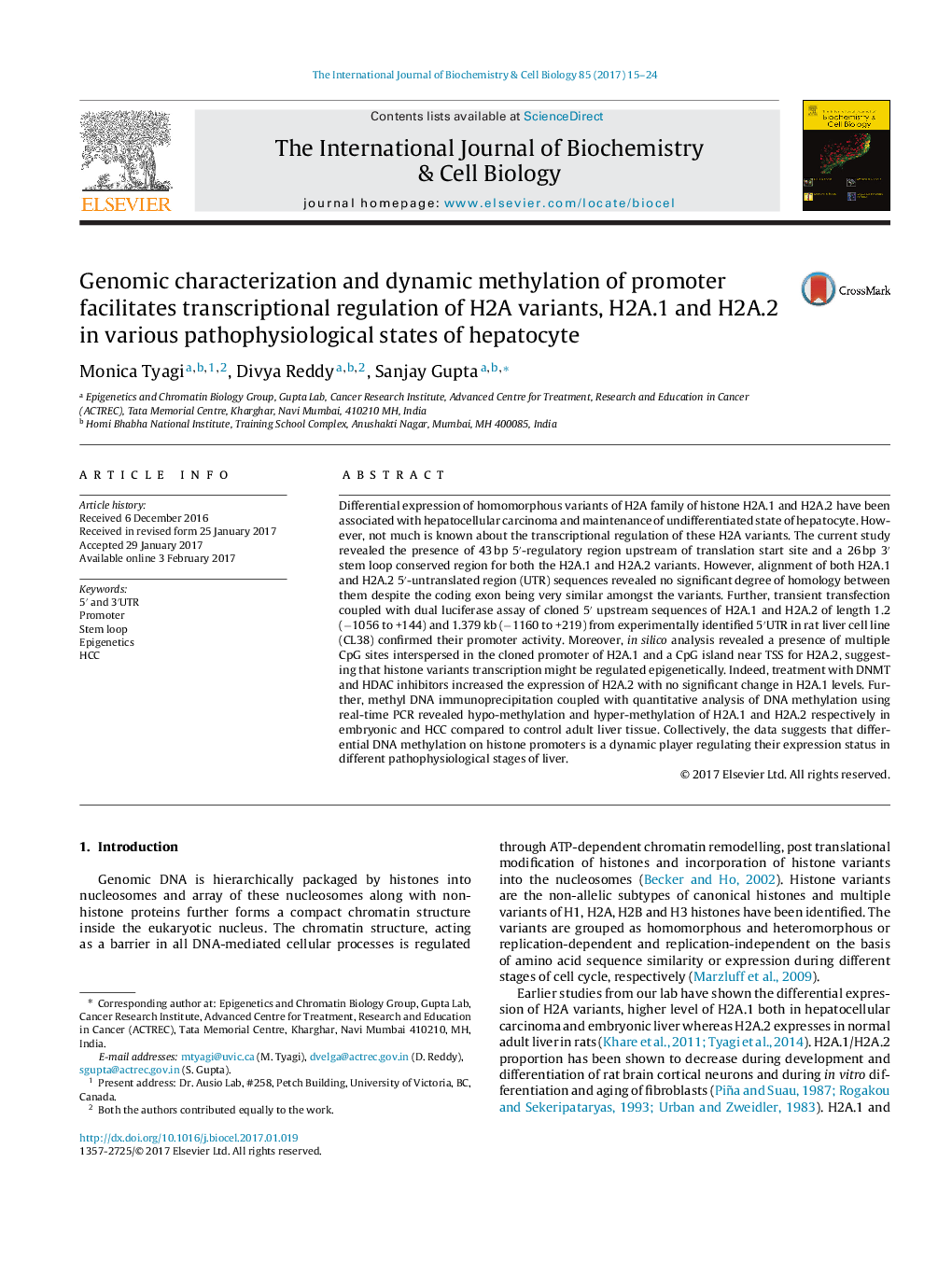| Article ID | Journal | Published Year | Pages | File Type |
|---|---|---|---|---|
| 5511425 | The International Journal of Biochemistry & Cell Biology | 2017 | 10 Pages |
Differential expression of homomorphous variants of H2A family of histone H2A.1 and H2A.2 have been associated with hepatocellular carcinoma and maintenance of undifferentiated state of hepatocyte. However, not much is known about the transcriptional regulation of these H2A variants. The current study revealed the presence of 43Â bp 5â²-regulatory region upstream of translation start site and a 26Â bp 3â² stem loop conserved region for both the H2A.1 and H2A.2 variants. However, alignment of both H2A.1 and H2A.2 5â²-untranslated region (UTR) sequences revealed no significant degree of homology between them despite the coding exon being very similar amongst the variants. Further, transient transfection coupled with dual luciferase assay of cloned 5â² upstream sequences of H2A.1 and H2A.2 of length 1.2 (â1056 to +144) and 1.379Â kb (â1160 to +219) from experimentally identified 5â²UTR in rat liver cell line (CL38) confirmed their promoter activity. Moreover, in silico analysis revealed a presence of multiple CpG sites interspersed in the cloned promoter of H2A.1 and a CpG island near TSS for H2A.2, suggesting that histone variants transcription might be regulated epigenetically. Indeed, treatment with DNMT and HDAC inhibitors increased the expression of H2A.2 with no significant change in H2A.1 levels. Further, methyl DNA immunoprecipitation coupled with quantitative analysis of DNA methylation using real-time PCR revealed hypo-methylation and hyper-methylation of H2A.1 and H2A.2 respectively in embryonic and HCC compared to control adult liver tissue. Collectively, the data suggests that differential DNA methylation on histone promoters is a dynamic player regulating their expression status in different pathophysiological stages of liver.
